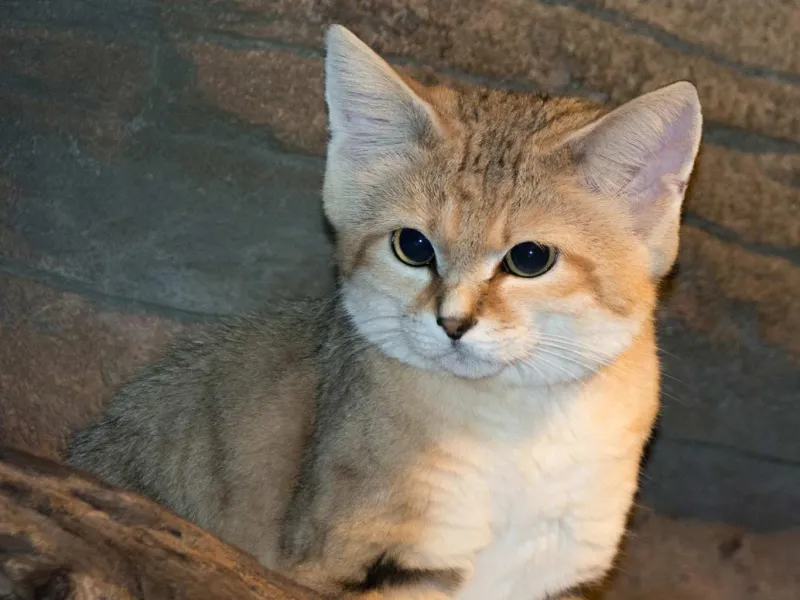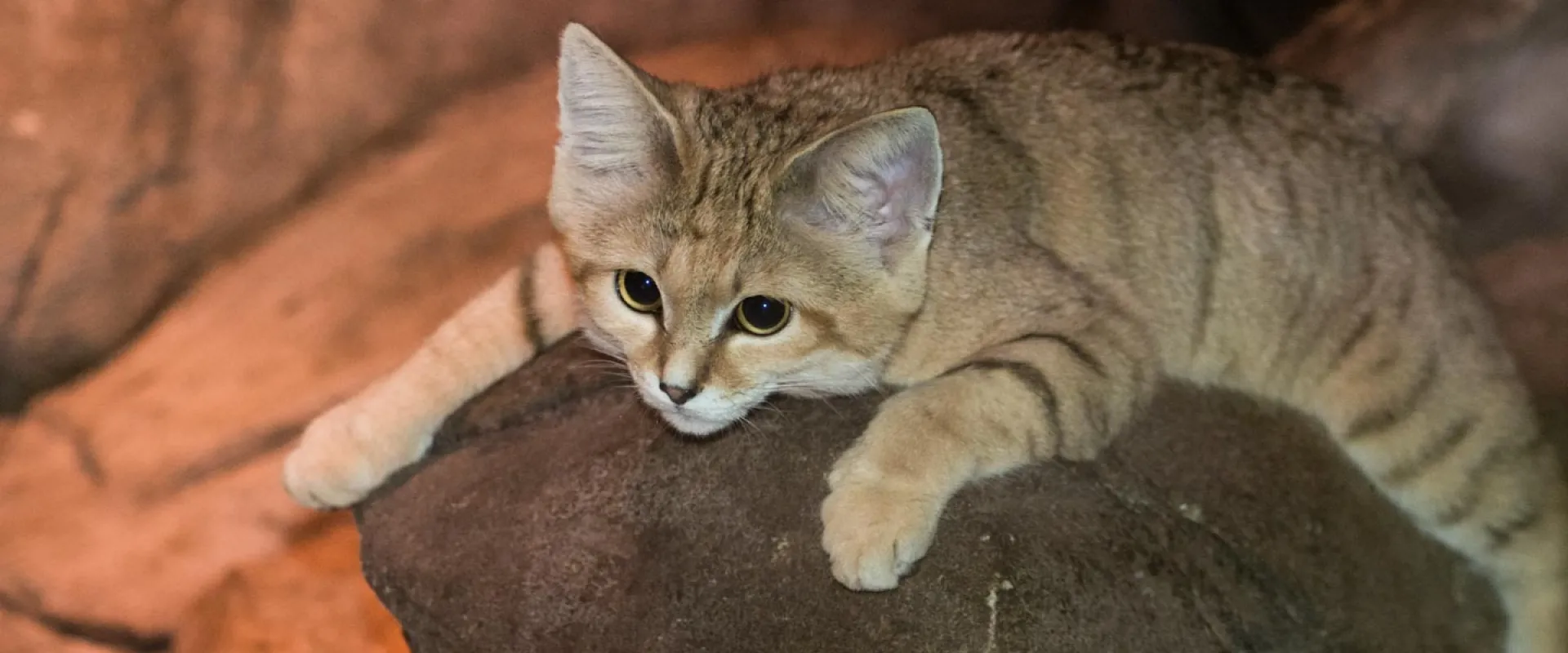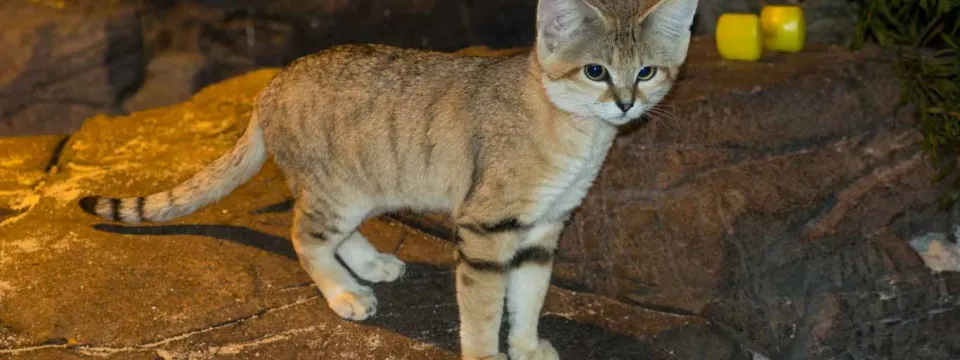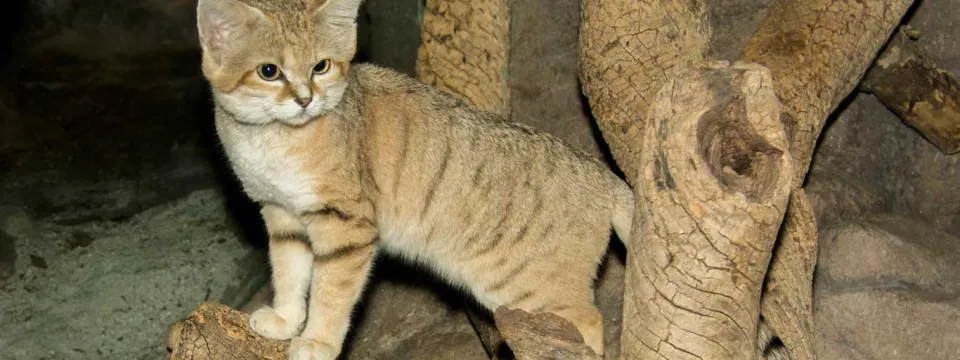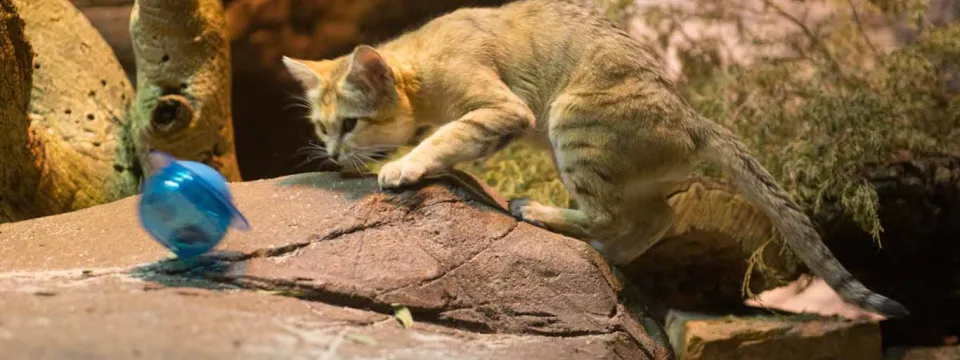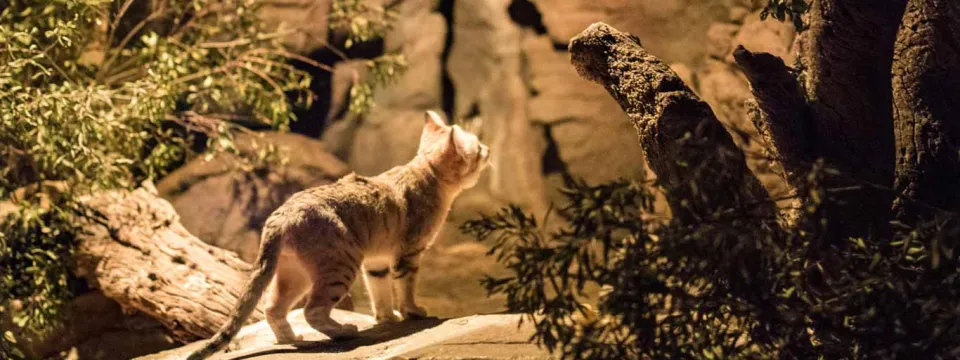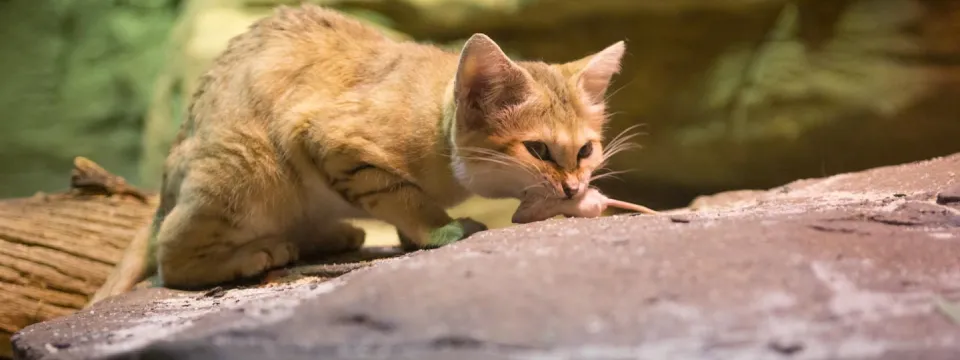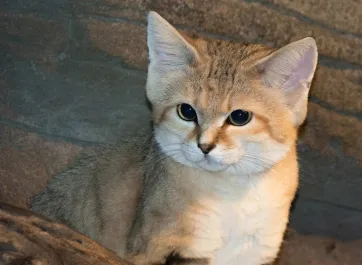Emily Lynch, Associate Curator of Research for the North Carolina Zoo
Pop quiz time! Who remembers what enrichment is??
In a post a few weeks back, I discussed the research done to assess feeding enrichment with our gorillas. To refresh your memory, “enrichment” is a tool we use to add complexity to an animal’s habitat, which can improve well-being. Generally, more enriched environments are associated with animals exhibiting more happy and desired behaviors. While enrichment can include any type of novel item, from a log to a food treat, it is very important to consider the behavioral needs of the individual and what species-specific behaviors you want to encourage. This can be a bit tricky, though, when working with animals that have different lifestyles than us humans.
Take, for example, the sand cat.
The sand cat is the only cat which lives mainly in true deserts and is found in Northern Africa, the Arabian Peninsula, and Western Asia. They are very small for a cat, measuring around 20 inches long, and can only weigh only up to 7.5 pounds!
Below: Sand cat: a wild cat found in the deserts of Africa, Arabia and Western Asia
But what might be most critical for our purposes, is that sand cats are nocturnal, or most active during the nighttime. This has important consequences for how sand cats experience and interact with their environment. In particular, like many nocturnal animals, sand cats tend to rely less on vision (although they often have a suite of special features to assist with seeing in the dark!), but, rather, have highly developed senses of hearing and smell. To create an interesting, challenging, and engaging environment, we must consider enrichment geared towards these senses.
Here at the North Carolina Zoo, we have two sand cats: female Najma and male Cosmo. Cat Clauson (real name!), one of the sand cats’ keepers, explained how enrichment tools are designed to encourage the use of their excellent hearing, as well as their desire to dig: “Our sand cats live on a sandy substrate that is about 6 inches deep in some spots. To encourage digging we will do things like bury something smelly, like feathers or place crickets in a paper towel tube and bury that. The cats then dig it up to get to the fun stuff. This replicates them listening for prey that lives under ground and then digging them up quickly to catch them.”
To build on this already valuable enrichment plan, North Carolina State University student, Mariah Chapman, designed a research study to help guide us towards the most effective objects to help encourage the sand cats’ natural, nocturnal-based behaviors through food-based resources. To measure the cats’ preferences, she recorded and compared their behaviors throughout the day (from 9:30am until 4:00pm) when offered 4 different types of food enrichment: frozen mice, sand buried mice, straw-buried mice, and a puzzle feeder.
Pictured below: sand cat with puzzle feeder enrichment
But, as can happen with science, sometimes research will take unexpected turns! During Mariah’s study, the Zoo had an opportunity to improve the lighting of the sand cat habitat.Typically at zoos, nocturnal animals are housed within a reverse light system: habitats are dark during the day and light during the night. This allows the animals to be more active during our daytime hours, which helps the keepers care for them and our guests enjoy their active behaviors (fact: zookeepers are diurnal—most active during the daytime).
During the time of Mariah’s study, the Zoo was able to install a dimmer system to more closely simulate a natural light cycle, where the light intensity decreases throughout the day and increases throughout the night. So, for example, the lights would be brightest at 2:00 am and slowly darken until 12:00 pm.Though this change would disrupt Mariah’s research a bit, changing the lighting system presented an exciting opportunity to test how the cats respond to this new alteration.
So what did we learn from this research project? Mariah found that, while all enrichment types generally increased Cosmo and Najma’s rates of desirable behaviors (such as exploring and digging), the largest average change in behavior (more than 25%!) was associated with frozen mice (picture below). This could be because it took the cats the longest amount of time to consume.
In addition, the light change appeared to markedly enhance the cats’ positive behaviors. Generally, lighting design can affect an animal’s behavior, circadian rhythm, and overall health. It is therefore very likely that the new dimmer system improved the cats’ physiology which resulted in Mariah observing more positive behaviors.
Cosmo and Najma are now happy sand cats enjoying an environment created around their nocturnal needs. For them, the Zoo is the purr-fect place to live!
Below: Sand cat with frozen mouse
